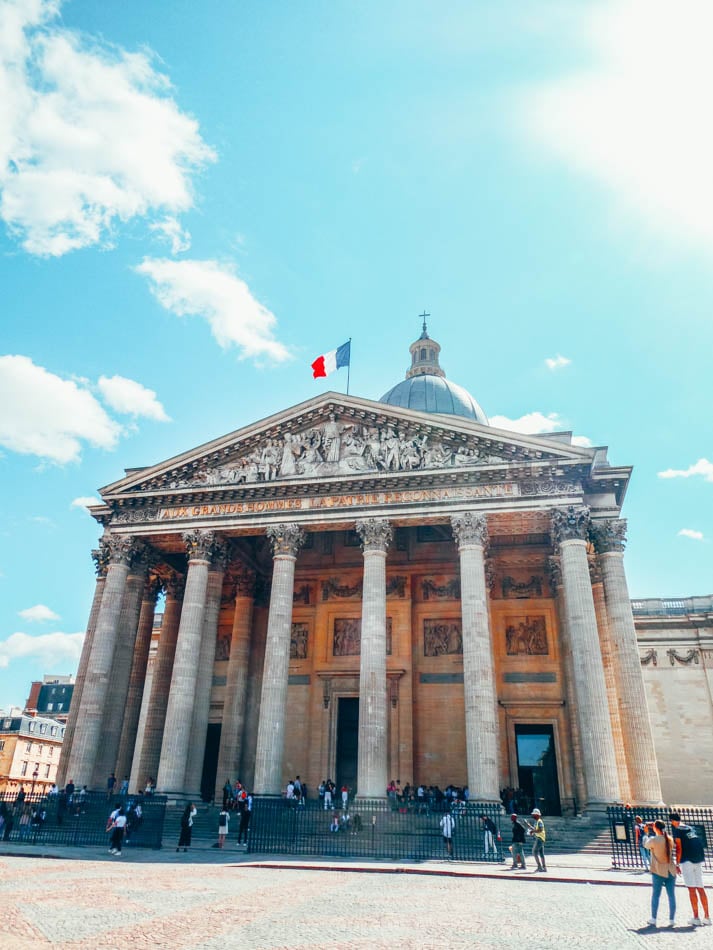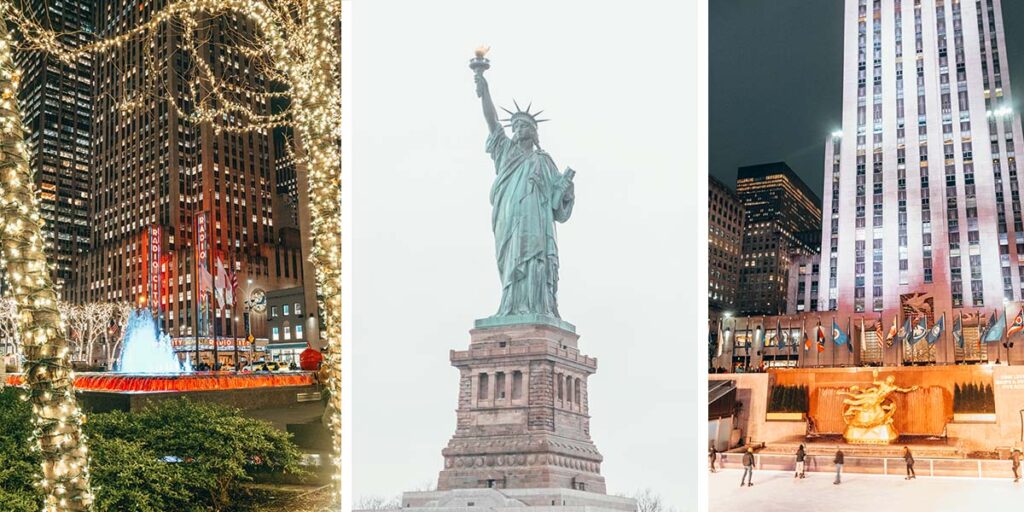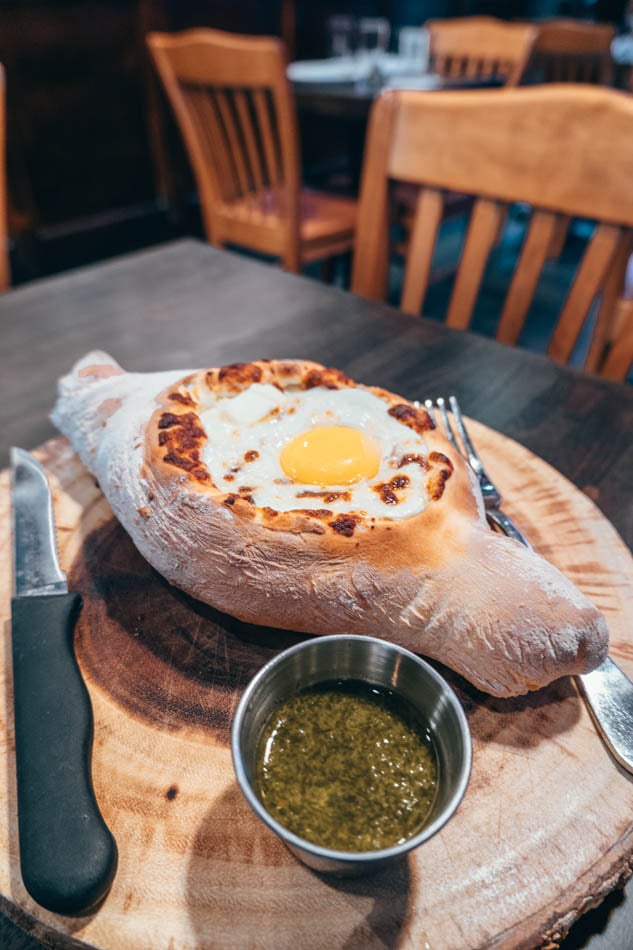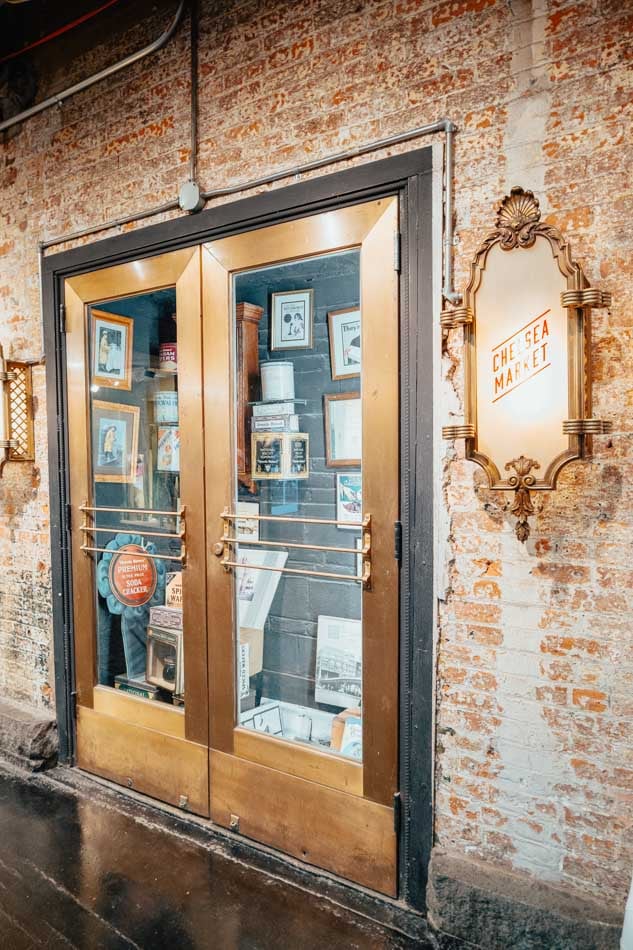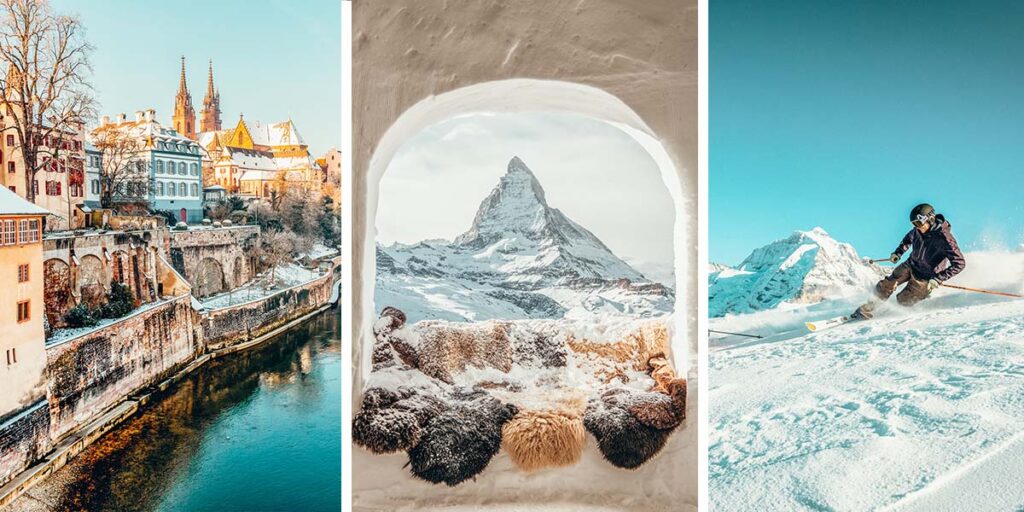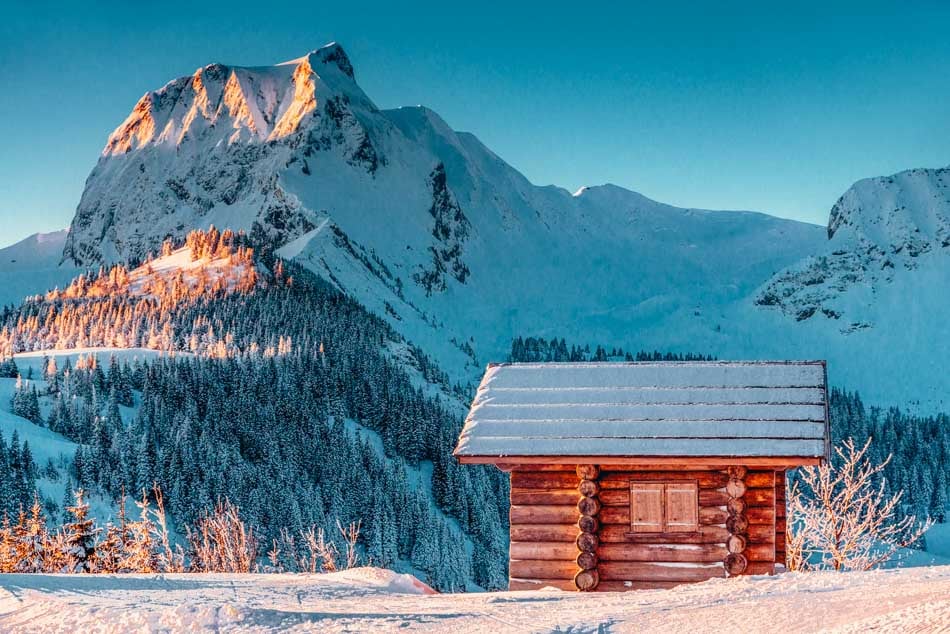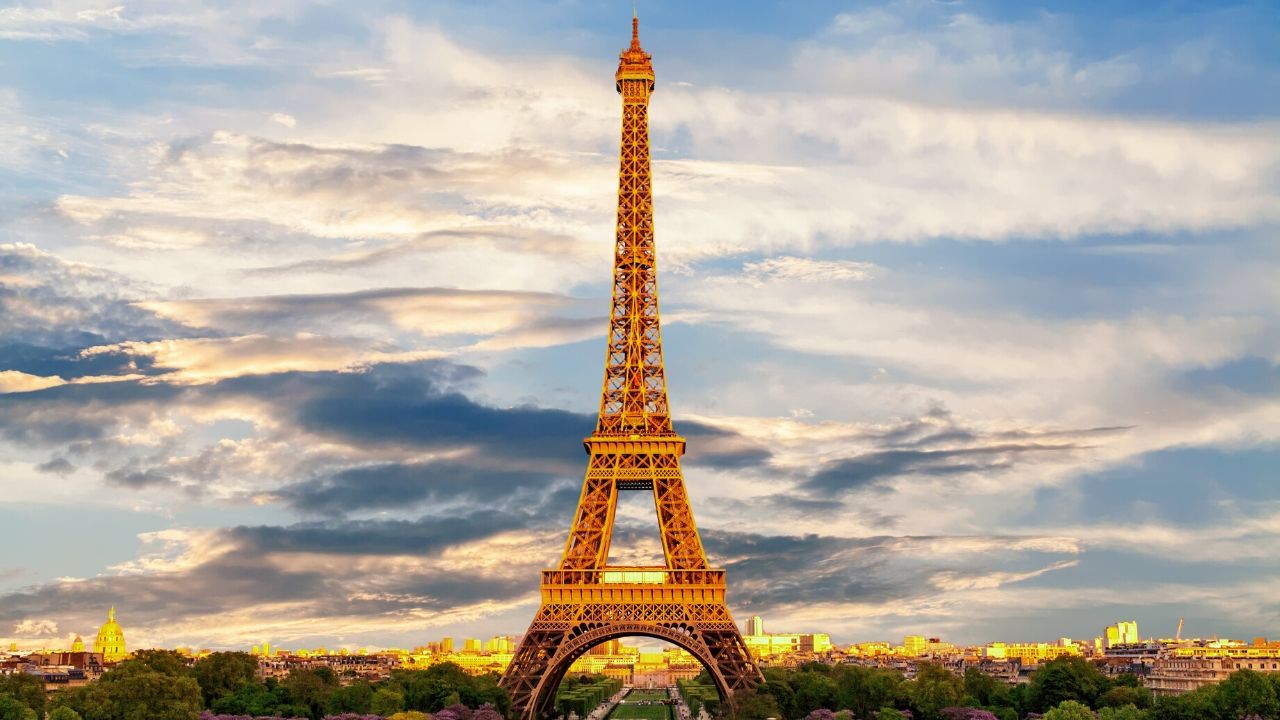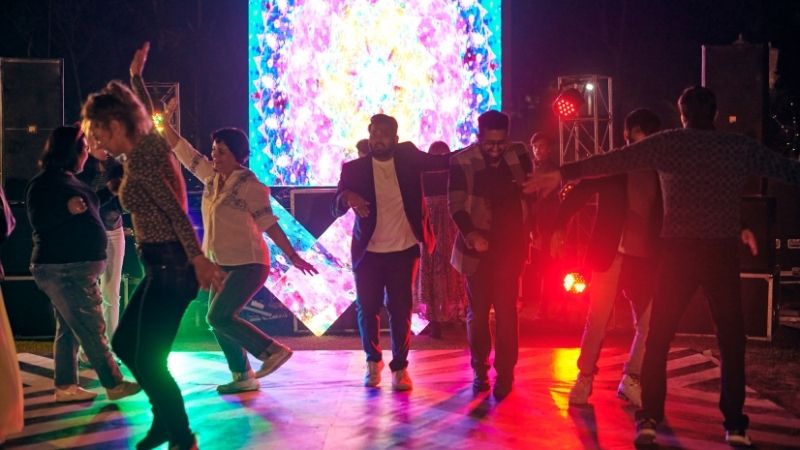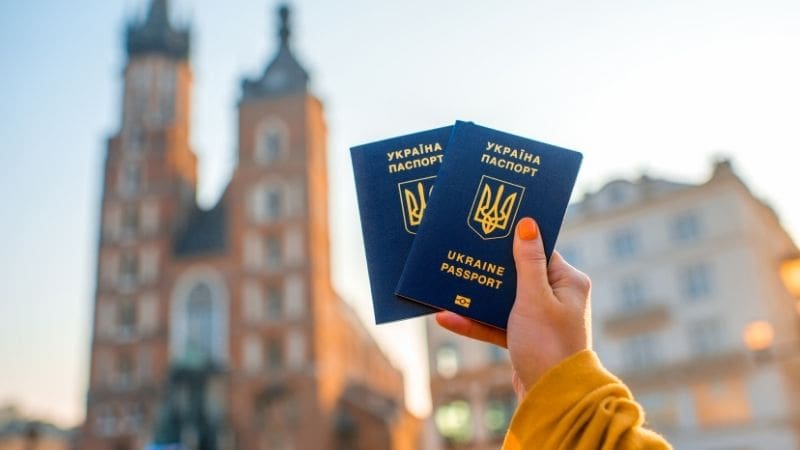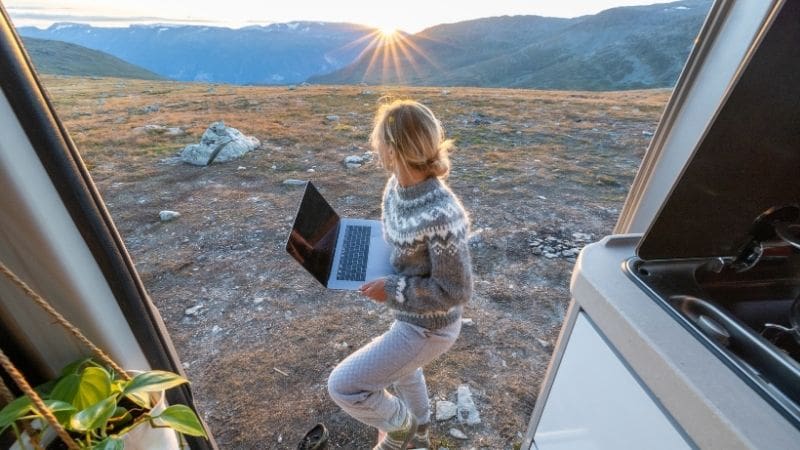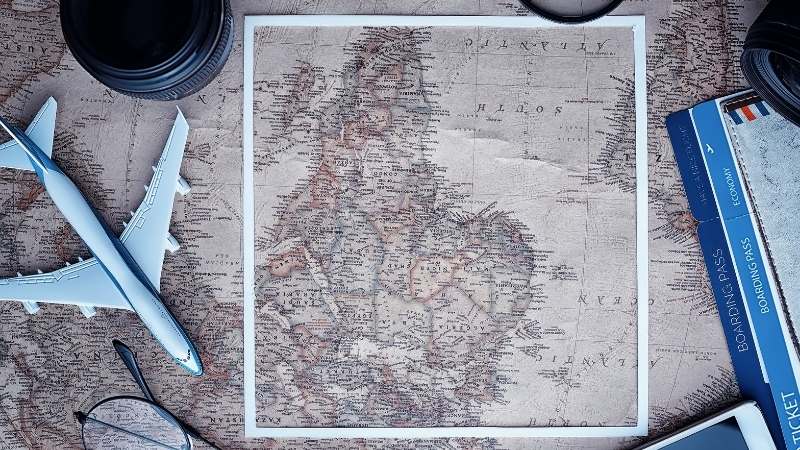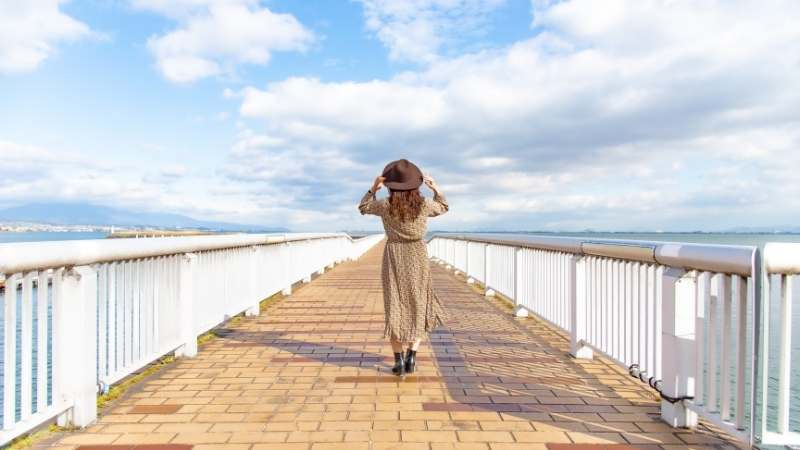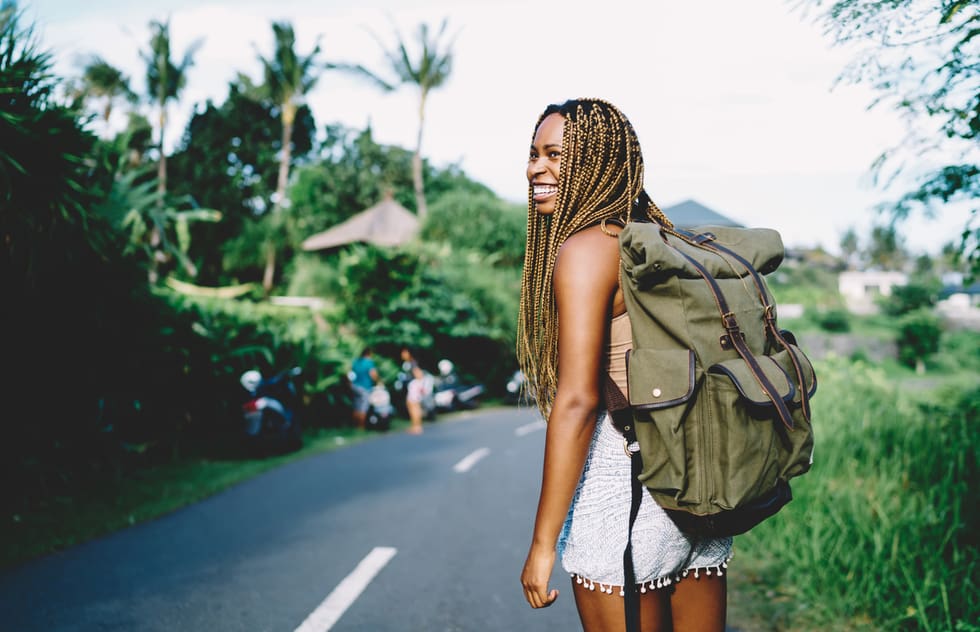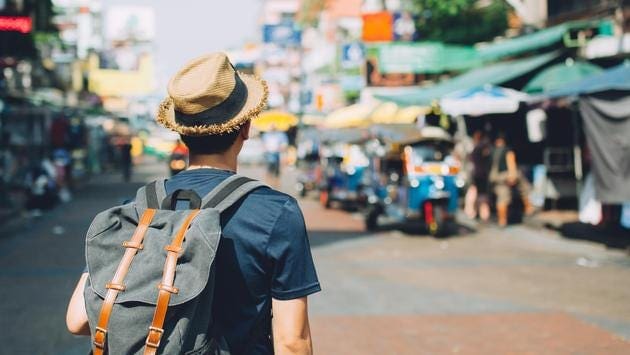Where to Stay in Paris for the First Time (& Where Not To Stay)

There’s nowhere in the world quite like Paris, France. “Paris is not a city; it’s a world,” said King Francis I. And oh, how right he was! Seeing Paris is seeing an entire world of possibilities, centuries of architecture and culture. It’s a lifestyle so special to one single place you wouldn’t be able to replicate it if you wanted to.
Nowhere else will you walk down a busy street, looking up at the imposing and elegant buildings, turn a corner and end up in an expansive garden where students are actually discussing Sartre and reading paper books, no phones or e-readers in sight.
As the day goes by and you meader the cobblestone streets, the smells emerging from the restaurant terraces change from early morning coffee to freshly baked bread at lunch until finally turning into busy hubs of activity in the evening when locals and tourists alike sit down for a catch-up and the all-important glass of wine. Ah, Paris.
But figuring out where to base yourself in this magical city is quite a challenge. Each arrondissement and neighborhood has its own identity and style: from the opulent stone buildings in the centre to the tourist hub around the Champs de Mars and the romantic, cobblestone streets of Montmartre lined with small boutiques and art galleries.
Whether your dream is to hit all the must-see attractions or lose yourself in the artistic world that inspired so many painters, we’ve got you covered with this essential guide to where to stay in Paris, written by a local!
Psst: Planning a trip to Europe? Here are some other posts!


Paris Travel Tips
Before you don your favorite beret and head off to the airport here are a few tips to help you prepare for your trip.
- When to go: Paris is at its best in summer, because it doesn’t get too hot (usually in the 70s F) but it’s mostly sunny and days are long so you can maximize your time strolling through the streets. Alternatives are spring (mid-April to June) when everything starts to bloom and days are still cooler between 65 and 70F (pack some warm clothes because the weather can be changeable) or September to October when the city is framed by colorful autumn leaves. Unless you want to see Paris at Christmas or for a crowded New Year’s Eve, avoid winter as you can’t enjoy the terrace and café culture and it gets cold and rainy.
- Prepare a few French phrases: It’s a tourist city and you will get by with English at all major attractions, but some French people in smaller establishments will be less willing to speak French. Mostly, it helps to recognize when people talk to you. The most common phrase you will hear when entering a bakery or coffee shop will be “sur place ou a emporter”, meaning “eat in or take away”.
- Stay safe: Pickpocketing is common in Paris, especially in very crowded areas (namely around the Eiffel Tower and on the steps of the Basilique du Sacré Cœur) and public transport (looking at you, metro line 6!). Don’t assume the worst of people and don’t let it ruin your holiday, but take some basic safety measures such as only taking the necessary items with you each day, making sure your wallet or phone isn’t on display and keep an eye (and hand!) on your bag when in a crowded metro.
- Watch your step: Unlike anywhere else in France, pedestrians do not automatically have the right of way, but are rather an annoyance to the city drivers. Watch whenever you cross the road – even if the light is green. In recent years Parisians have really embraced biking and e-scooters. Watch out for them as they go fast… and don’t have to stop at red lights like cars. On large intersections, you first cross the bike line (looking left and right), then wait for the traffic lights to cross the actual intersection.
- Consider your public transport options in advance: Transport is quite inexpensive (except for the specific airport transport), but it’s even cheaper if you plan ahead. Look at where you are staying and how much you will be outside the “walkable zone” and get a 2/3/5-day pass. Generally, unless there is a bus stop right outside your hotel, opt for the metro. It’s much more reliable and faster as Paris traffic is slooooow and congested. Get the CityMapper app (or the local RATP app if you understand some French) ahead of time if you need help navigating the metro.
- Check for events: Especially if you are coming in the summer months, check for events that may cause roads or attractions to close or give you an unforgettable extra experience: 21st June is the Festival of Music which warrants massive celebrations all around the country, including the capital, 14th July is the national holiday Bastille Day, 15th August is another big religious holiday the Assumption (causing some places to close or be busier because nationals travel on that day), in between the Tour de France arrives in Paris and 2024 is the year of the Paris Olympic Games!
- Make your trip unique: Aside from the big, famous, almost mandatory sights in Paris, there are plenty of lesser-known and quirky things to see, so have a think ahead of time about what would make your trip special and more personal. Do you want to experience a comic café, a nap bar, or a Parisian speakeasy? Are you going to find the oldest house in Paris which also happens to be a great site for Harry Potter fans, or the remnants of a Roman arena where gladiators used to fight? You can also visit the Dior Museum, swim on the river Seine in a suspended pool, go to a beer spa, or see Paris from a (static) hot air balloon 500ft above ground.
- Bring comfortable walking shoes: Paris is as much about its buildings as it is about the feel of the city. The only way to experience the flair of each neighborhood is to walk it. Even if you take a metro into a neighborhood, you will still walk a lot, especially if you take one of the many free walking tours (you can choose the theme and neighborhood and it’s always between 90 minutes and three hours), so having good walking shoes is key. Here are our favorite travel shoes for men and for women. You can also save yourself a bit of walking by taking a Guided Segway Tour or even in a retro French Citroën 2CV. But even with public transport and all your other options, the hands-down best way to see Paris and the only way to appreciate the traditional street signs and carvings on old buildings is on foot, so remember to bring Body Glide and comfy bike shorts to avoid chafing.
- Avoid short-term apartment rentals: While renting out your apartment is legal in Paris; it is under strict regulations which owners don’t always adhere to and that you can’t check. To travel with a clear conscience and avoid any problems, book yourself an official hotel; we promise we will give you plenty of good options below.
- Not all souvenirs are legal: Around the main attractions, namely the Basilique du Sacré Cœur and the Eiffel Tower, you will find a lot of vendors selling souvenirs on a sheet or blanket on the ground. Avoid them and look in a shop instead. They are not allowed to sell in those areas and are part of the reason police patrol those areas.
- Respect mealtimes: You may be on holiday time, but French restaurants have strict service hours. Lunch-time service starts around 11:30am and the kitchen closes at 2pm at the very latest. Come after that and all you get is a drink as they prep for dinner service. If you don’t like to abide by those hours the “service continu” signs will be your best friend. These restaurants take pity on tourists and have food all day so you don’t have to go hungry.
- If your check-in and check-out times don’t sync up with your need to roam the streets and you need a place to store your bags check out LuggageHero, a service that helps you find a safe place to keep your luggage while you’re running around! Use the code PRACTICALW for 2 hours of free luggage storage on us.

Where to stay in Paris for the First Time
The beautiful city of Paris… is a confusing one to get around.
The city is divided into 20 arrondissements, which are the administrative districts of the city, numbered in a spiral (or snail) shape starting with number 1 in the center of the city, at Notre Dame Cathedral. Numbers 1 to 9 are quite central and touristic, then it becomes more residential.
There are also neighborhoods, which are loosely based on the numbers but not entirely.
In explaining where something is, people may use the number of the arrondissements or the name of the neighborhood, though these differ between the more general areas we use for tourism and the smaller sub-areas the locals refer to. The river is irrelevant in all this. While the south is the Rive Gauche (Left Bank) and the north is the Rive Droite (Right Bank), people generally prefer numbers and neighborhoods.
Confused yet?
To help you navigate, the number of the arrondissement you are in is written at the top of almost every street sign (which is why people more commonly refer to the numbers) and to help you locate an address, the postcode (starting with 75) also has the arrondissement number in the last two digits. But seriously, all this gets you nowhere if you are not a local. The only real way to get around is with a map (or app) because the streets are not in a grid, but rather all over the place.
The most important areas for you are:
- Arrondissements 1-4: The Louvre and Marais (also called Palais Royal and Les Halles) which cover the central islands and just north of the river. You can take a stroll anywhere around here and be surrounded by history and “more than French looking” restaurants and shops and metro stations are everywhere to get you around.
- Arrondissement 5: The lively Latin Quarter is full of life (and students), and bistros, where you can take your pick of terraces to try different French cuisines! From mussels and chips to coq au vin and snails – you will find it all. Even more traditional regional food from the Mediterranean south or raclette from the Swiss border.
- Arrondissement 7: The Eiffel Tower and Invalides. Around the Champ de Mars and Trocadero are the main tourist attractions and those are probably the busiest areas of the city, but take a side street and you are in one of the most elegant residential areas of Paris.
- Arrondissement 8: The Arc de Triomphe and the Champs-Élysées. This is the home of all the famous luxury brands you can imagine. This is where you go if you want to window shop and see how the other side lives.
- Arrondissement 18: Montmartre. At the heart of the neighborhood is the Basilique du Sacré Cœur and the nearby Place du Tertre. It’s full of tourists and yet has a calm feel to it due to its narrow cobblestone streets and artistic souvenir shops. This is truly the area that gave Paris its nickname of “City of Love”.

Louvre and Marais
Welcome to the heart of Paris!
Walk down any street and turn any corner and you feel that you are in Paris.
The Louvre and the Marais are some of the liveliest parts of the city where you can wander in and out of galleries, shops and restaurants whilst visiting some of the main attractions in the city.
The Louvre Palace and Notre Dame (currently still closed for reconstruction, but you can walk around it) are within walking distance, as are most other places that are probably on your list, such as Centre Pompidou (the funny-looking industrial building with all the pipes on the outside), the newly installed Olympic Rings for Paris 2024, the Tuileries Gardens, Victor Hugo’s house…
It’s not as crazy-busy as it sounds. You spend your days walking along the Haussmann-era boulevards (he’s responsible for the uniform limestone buildings and mansard roofs Paris is now known for), exploring the residential island Saint Louis (just behind Notre Dame), browsing the bouquinistes stalls (booksellers and more) along the river or resting in the shade at the Luxembourg Gardens. At dinner time you can sit on a Parisian restaurant terrace watching the world go by (don’t worry, snails are optional).
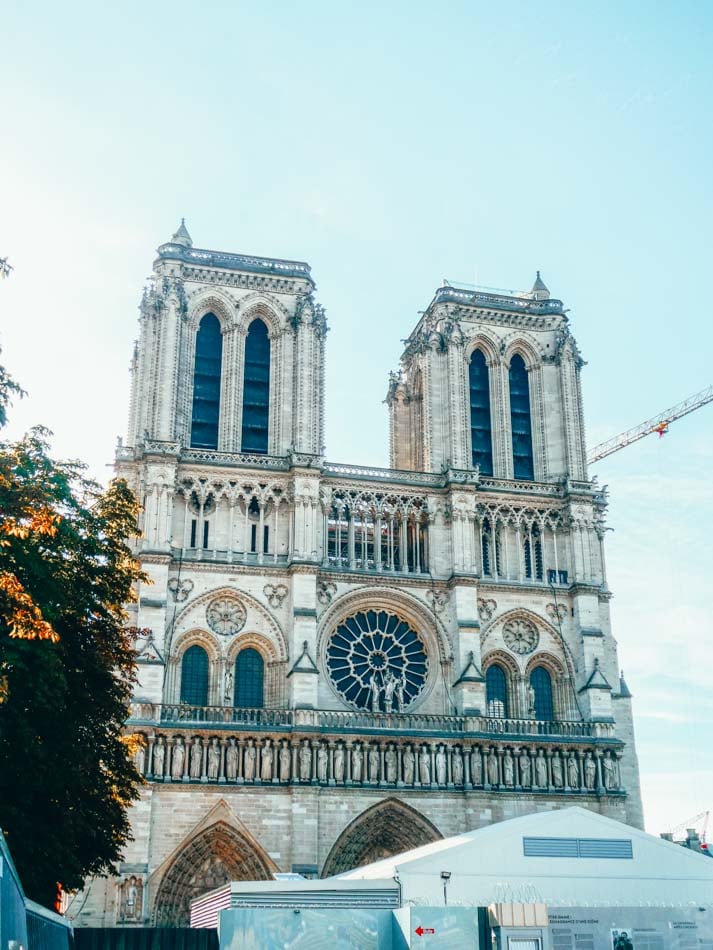

Where to Stay in the Louvre and Marais
If you have the romanticism of Paris in your bones, here are some of the best places to stay in this iconic neihgborhood:
- Unassuming from the outside but decorated in an old-fashioned but chic style on the inside, the Hotel du Cygne is right in between the Louvre and the Marais and close to the train station (Chatelet les Halles) that links to the main international airport (CDG). Walk south and within a few minutes you are at Notre Dame, walk north and you can take your pick of restaurants every night.
- If you truly want to be at the heart of the hustle and bustle of French terrace culture, then the Hotel des Ducs d’Anjou is for you. It’s on the edge of a pedestrianized area which comes to life at dinnertime. Step outside the hotel and the buzzing of the voices coming from dozens of restaurants around you hits you and there you are, right in the middle of a sea of culinary options.
- Just on the edge of the Marais neighborhood lies the hostel The People Paris Marais, which has private double ensuite rooms. As a (relatively) budget option, this is your best bet if you want to remain within walking distance of the center.


Montmartre
Montmartre is an enchanting and artistic neighborhood. When you imagine the romantic Paris, the small cobblestone streets and artists painting, this is where it’s happening.
Staying here means you can explore the city centre during the day and come back to your quiet home in the evening. In the mornings, you can take your time, have a lie-in or wander the streets away from any crowds at all.
Mornings are sleepy in Montmartre, with the famous artist square Place du Tertre not waking up before 10 or 11am and you can meader the steep hills at your leisure (if you are taking the metro, use the lift as there are around 150 steps up and down due to the hill!), finding the Pink House, and having breakfast in tiny cafés serving a truly French brekkie of coffee (or orange juice) and a croissant.
You can also try to be the first ones at the Basilique du Sacré Cœur in the morning to enjoy the view without the hordes of tourist and street vendors and then come back to browse the quaint little shops and art galleries or have your portrait drawn.
In the evenings you can explore the nightclub area and the “naughty life” around the Moulin Rouge… or stick to the romantic view of the Basilique du Sacré Cœur at night.
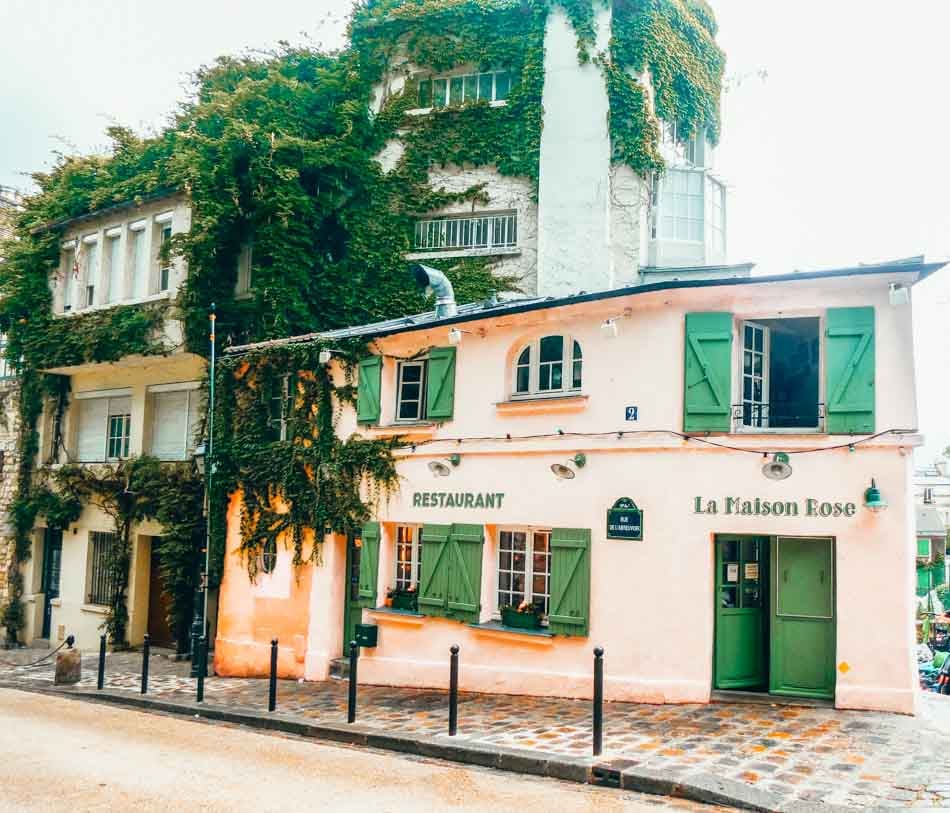
Where to stay in Montmartre
Monmarte is definitely the place to stay if you need to live your Amélie fantasy! Just note that the closest stations to the hotels below have – at least partly – steps only access to the street so if you have luggage, be prepared to carry it at least a little.
- The best view – and yet the cheapest option! – is at Le Village Montmartre hostel where you can see the Cathedral if you book a private room. And even at the cheapest price, breakfast is included and the rooms and bathroom are colorful but elegant with an imposing, freestanding bathtub (in the room).
- To be as close as possible to the nighttime action, stay at Hotel Basss which is right by the lively Boulevard de Clichy. Though the bathrooms are a little dated the rooms are modern and clean and you can look out onto the roofs of Montmartre from your balcony.
- For a historic feel, the Lepic 29 is ideal. While the hotel interior is modern, you are located on a historic shopping street and the closest you could be to Montmartre Cemetery, the famous resting place of many artists. Wake up, look out from your balcony, have breakfast on the terrace in front of the hotel, and then start exploring.
The Latin Quarter
The vibrant Latin Quarter is a healthy mix of lively bistros and memories of student life, and quiet streets away from the fast and busy city life.
You are just south of the river and Notre Dame, nestled between the Jardin des Plantes and the Luxembourg Gardens. While you can get to all the big attractions fairly quickly and easily, you can also take the time to explore the lesser-known part of the city (to international tourists at least).
The beauty is being able to walk around – seemingly aimlessly – taking in the buildings in the medieval part of Paris and passing the historic shops and cafés. Around almost every corner there is something beautiful to discover, whether it is listed in your guide or not.
Walk around the Sorbonne buildings, take in the Pantheon (and walk over to the Emily in Paris apartment if you like the show), find the remnants of a gladiator arena, and sit in a café on the Place de la Sorbonne facing impressive the Chapelle Sainte Ursule.
You can also head to the Mosque (the small entry fee is worth it if you are interested in exploring it or simply want some pictures of the stunning mosaics inside) and to the Arab World Institute with its intricate design full of geometric shapes making up the exterior of the building.
Where to stay in the Latin Quarter
To get a taste of the student life and to check out some of the less-known areas, some of the best places to saty in the Latin Quarter are:
- For a truly homey feel, the Hotel Home Latin is on a pedestrianized section of road. Though it’s right by the busy main streets, it has a residential feel to it: games are painted on the street for children to play and local restaurants are just down the road.
- Just behind the Sorbonne buildings is the Paris Art Hotel, a modern hotel completely renovated on the inside but with a traditional metal balcony so you can enjoy a view of the neighborhood from above.
- For a budget option, check out Hotel de Suez. It’s clean and the rooms are nicely decorated and you are directly on the main road between Notre Dame de Paris and the picturesque Luxembourg Gardens.
La Tour Eiffel
If the Eiffel Tower has been on your bucket list for a while and you want to see it during the day, at night, and in between, then this is the area for you. Some people are content seeing the Iron Lady once, maybe taking a few snaps, and moving on, but others are fascinated by it and want more.
Staying in this area means you can take a walk at the start or end of your day and spot her, watching the first lifts go up and people appearing as tiny dots on the 3rd floor, or even just catch a glimpse of her in between the trees as you walk around neighborhood, from the Invalides (which houses the army museum) and the Trocadero from where you get the best view of the tower and the chance for a good photo in front of it.
It is also one of the most affluent residential areas in the city and instead of a busy nightlife you will find mostly luxury hotels, perfect if you want to treat yourself on this trip.
Where to stay near the Eiffel Tower
If the Eiffel Tower is your dream, check out these hotels near the iconic iron lady:
- If this is your bucket list trip and you are willing to splurge a little, then book yourself into one of the rooms with a view of the Eiffel Tower at Art Hotel Eiffel. If you want a shot of you waking up and looking at the Iron Lady, then this is the hotel for you. Aside from this BIG selling point, it is also right next to a metro station that takes you straight into the center.
- The Eiffel Petit Louvre is conveniently located right next to a metro station and rooms have a view of the city (not of the famous tower though), but my favorite part is that you are just a few minutes from the Bir-Hakeim bridge, which is an ideal sunrise spot. Get up, watch the sunrise over the sleepy city and then come back for breakfast before starting your day.
- Another option for a private view of the Eiffel Tower is at the Hotel Duquesne Eiffel (if you book a premium room or a room with a balcony). From the decoration with black and white photos of Paris to the vaulted stone breakfast room, everything reminds you that you truly have arrived in Paris.
Dog-Friendly Paris
Your doggie might also want to see Paris, and who can blame them? Imagine walking the streets smelling baguettes and croissants everywhere…
If you are traveling with your pooch, know that while most big attractions don’t allow dogs, there are actually plenty of things to do specifically with your dog, including the large Caniparc (dog park) at Denfert-Rocherau.
There are plenty of parks to explore in the city and you can find a map of parks that allow dogs here. You can also take a tour of the city by boat and choose different themes for your tour and take your dog along – just let the company know at the time of booking.
If your dog is happy to socialize, you can even take a guided TouTouTour of Montmartre with other dog owners and to see the Eiffel Tower, Place du Trocadero is your best spot to enjoy the view with your dog.
Getting around the city in general isn’t too difficult: if your dog is small (under 18 inches), they are allowed on all public transport, any larger and they can come on the metro and the RER and even the Batobus (the public transport boat) muzzled and on a leash.
Dog friendly hotels
- Hotel Paris Louis Blanc: By far your cheapest option is this 3-star hotel right by the Canal Saint-Martin, which is a prime dog-walking area. Dogs are welcome not only in the hotel’s private rooms, but also in the lush garden with plenty of outdoor seating areas where you can relax from your day’s exploring.
- Hotel Basss: If you have a small dog (under 8kg, 17lbs-ish), this boutique hotel at the heart of the Montmartre neighborhood is ideal. You can choose the size of the room at the time of booking to make sure there is plenty of space to set up the doggie bed and all their other essentials.
- Acacias Étoile: For a rather active dog, Acacias Étoile is ideal. While slightly further away from the central attractions, it is close to the Bois de Boulogne, one of the large parks with plenty of forested areas for long dog walks. You are still close to the Arc de Triomphe and Champs- Élysées and have a metro station right by the hotel that will take you directly into the centre.

Budget-friendly Paris
It may not seem like Paris is a particularly good destination for your wallet, but you can make significant savings on your trip if you really want to visit and are on a tight budget.
First of all, know that you can absolutely enjoy the beauty of the city for free, just by walking the streets (or taking a free tour and tip what you can), taking in the old-fashioned street signs and metro entries, getting lost in the maze of cobblestone streets and watching Parisian life as you sit on a bench in a park.
In terms of seeing the sights, most of them are worth seeing just from the outside and part of the sights are the neighborhoods with their distinctive characters, which you get the best feel for when you walk around.
Tips for a budget trip
- Plan the order in which you explore the city. Choose the days where you explore on foot from your accommodation and then plan 1, 2 or 3 days to explore a little further afield; all-day public transport is cheaper if you use it on consecutive days
- Do your research. Browse social media pictures to find quirky spots you want to see that others might miss while they are inside (paying) attractions: The pink house, Passage des Panoramas and the colorful houses of Rue Crémieux or the Wall of Love are all beautiful places to see for free.
- Choose ONE attraction you really want to see. Individually, the entrance fees are acceptable, it’s the sheer amount that makes the bill go up on the trip. So treat yourself to seeing the Mona Lisa or going all the way up the Eiffel Tower.
- Paris from above. Instead of paying for access to a rooftop to see the city from above, head to the top floor of the shop “Le Printemps” from where you will get a beautiful view of the city.
- Opt out of breakfast. Instead of paying what your hotel or hostel charges for breakfast, walk the streets instead and you will find a pain au chocolat or croissant for two euros. It’s a typical French breakfast experience and a money-saver all in one.
- Try all the cheese. Instead of finding a restaurant that fits your budget every night, go to a local supermarket and choose some cheese to try – there are PLENTY! Grab a baguette and some salted butter and you are good to go for a typical French dinner. For an even more Parisian experience, shop in the beautiful market street Rue Cler.
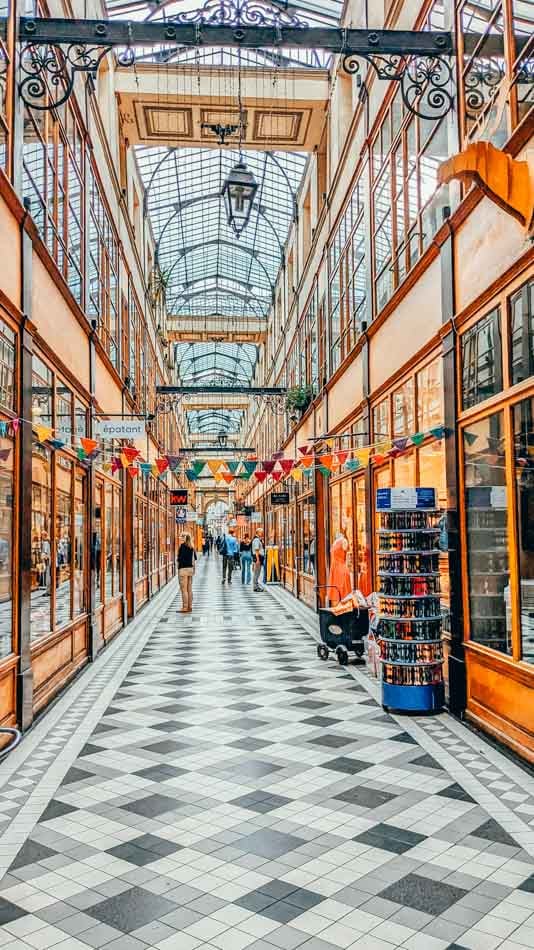
Hostel dorms that you won’t regret staying in
To REALLY save yourself some money, choose a hostel dorm over a hotel, which will cost you a third or a quarter of the price and gives you the option of eating “at home” after perusing the shops and markets. Believe it or not, there are some really beautiful and affordable hostels.
- The People Paris Marais: Just on the edge of the liveliest neighborhood and gastronomy hub of Paris, le Marais, this is where you can stay on a budget if you want to explore Paris on foot. Each bed has a reading light and black-out curtain, a plug and a small safety box as well as a locker.
- St. Christopher’s Inn Canal: Located in the hipster area of Paris (Canal St. Martin) and close to two metro stations, this hostel has bright and roomy dorms with lots of daylight. You can also enjoy a drink at the hostel bar which has a terrace right on the canal.
- Generator Paris: Not far from the metro, not far from the main train station in and out of the city, and right between the center and Montmartre – this is the ideal place to save some money on your trip. Bonus: The rooftop bar has a view across the city and all the way to Montmartre.
Where Not to Stay in Paris
While the center of Paris is mostly safe (though of course it remains a big city and you should always take some precautions with your valuables), there are areas that are less inviting, especially for a first-time visit when you want to see as much as possible and be at the heart of the action.
Also remember that France and the French (I say this as a French person writing this), love to strike and they protest often and loudly – and not always peacefully. Sadly, riots are becoming common, especially in the capital, and are something you won’t be able to plan for in advance. Unless the official guidance is not to visit Paris, you will still be able to go, but you will be safest and least impacted by what’s going on if you stick to the more touristic areas.
Aside from that, some areas are just not particularly interesting for a first visit. While they may be beautiful residential neighbourhoods, you are far from the real highlights of the city.
Pigalle
Pigalle is known as the cool and trendy district of Paris – and home to the Moulin Rouge. The red-light district is definitely worth a visit, but it’s not ideal if you want a rest after a long day exploring and should you pop out alone in the evening for something, you find yourself in the party area and possibly crazy party-goers. Go when you fancy a good night out, but stay a few streets away for more peace and quiet.
- Where to stay instead: Just a few streets over you can stay in Montmartre where the streets are quiet and you can safely walk around at night. Check into Hotel Basss so you are just two streets away from Boulevard de Clichy, but far enough away from the craziness.
Champs-Élysées
This is the exclusive, but also very expensive area of Paris. If you want to wake up, have your breakfast and waltz straight into Dior or Louis Vuitton then this is for you, but otherwise it is rather pricey. And whilst it is the most famous street in the city and just a few steps away from the Arc de Triomphe, it’s actually quite far from most other places of interest, so you spend extra time walking or on public transport.
- Where to stay instead: Art Hotel Eiffel, on the other side of the Seine, is still affluent but much more affordable and a good mile closer to all the sights.
Double-digit arrondissements
Except for just around the Eiffel Tower (the edge of arrondissement 15) and Montmartre (arrondissement 18), avoid the double-digits, even if prices are more affordable. Many of them are beautiful residential areas but due to the layout of the city, it means they are farther removed from the centre and you will take a long time getting to the interesting sights.
- Where to stay instead: If you are trying to save some money on your hotel, check out Hotel Home Latin instead. It’s on a quiet street in the lively Latin Quarter and cheaper than the other central areas or check out our hostel options in the budget section above.
Where to Stay in Paris for the First Time: Summary
That’s quite a lot of information! So to wrap it up into a bite-size piece, here we have an at a glance summary.
- The Best Areas to Stay in Paris: For a truly French experience go for the Marais in the center or Montmartre for the romantic and artistic atmosphere.
- The Best Hotels in Paris: If you want to go all out, check out the rooms with a view at Art Hotel Eiffel. Closer to the center and a little cheaper is The People Paris Marais and Hotel Home Latin will make your visit a typical Parisian experience.
- The Best Dog-Friendly Hotels in Paris: Not only a dog-friendly but a super-dog-welcoming option is Hotel Paris Louis Blanc.
Why aren’t we recommending any AirBnBs? While renting out your apartment is legal in Paris; it is under strict regulations which owners don’t always adhere to and that you can’t check. To travel with a clear conscience and avoid any problems, book yourself an official hotel.
About Our Author: Claire Herbaux travels the world finding different countries to live in for a year, or two or more. She’s lived in France, Germany, England, Spain, Australia, Canada and Ecuador and is now in Mexico. She loves nature and wildlife and is happiest when scuba diving.
What are your thoughts about our Where to Stay in Paris for the First Time post? What part of Paris do you want to stay in? Let us know below!
Psst: Planning a trip to Europe? Here are some other posts!

FOLLOW US!
Psst: Save this post for later on Pinterest!

Our Top Travel Tips & Resources
- Booking Flights: To score flight deals, search on Google Flights or Kayak. Money-saving tips: fly mid-week or on the weekend; fly carry-on only on a budget airline; and take red-eyes or early morning flights.
- Accommodations: We usually stay in budget-friendly vacation rentals, boutique hotels or private rooms in hostels. We use Booking.com to book hotels (we love their flexible cancellation policy) and Hostelworld to book hostels (low deposit, easy change/cancellation, and excellent reviews). For vacation rentals, we prefer to book using VRBO because they’ve got lower fees and better support than Airbnb, and we’re not fans of Airbnb’s unethical track record. You can also book vacation rentals on Expedia and Hotels.com. We also use TrustedHousesitters as both hosts (for our home and our fur-child) and travelers!
- Travel Insurance: We always, always, ALWAYS buy travel insurance for international trips, and we STRONGLY suggest it – visit our Travel Insurance Guide to find out why. We recommend either World Nomads or SafetyWing for international travel insurance. SafetyWing is one of the few policies that covers Covid-19, and they have excellent monthly policies that are perfect for Digital Nomads and long term travelers!
- Travel Credit Card: We book all of our trips on our favorite travel credit card. Not only do we earn cash back that we can spend on more travel, but the card offers fantastic travel perks like travel insurance, trip delay and cancellation coverage, lost baggage reimbursement, and rental car coverage, which helps protect us on our travels. Learn more here.
- Vaccines & Meds: We use the travel guides on the CDC website to research recommended medications and vaccines for international trips. We always recommend getting every vaccine recommended by the CDC! You can get them at your primary care doctor’s office or a walk-in pharmacy.
- Tours: We love booking guided tours, especially food tours and walking tours, to get a local’s perspective and a history lesson while sight-seeing! We book our tours using Viator and GetYourGuide.
- Transportation: We use Rome2Rio to figure out how to get from place to place, and book local transportation online using Bookaway wherever we can. When we book a rental car, we use DiscoverCars to compare rental companies and find the best deal.
- Luggage Storage: Whenever we’re checking out early or taking advantage of a long layover, we use LuggageHero to safely store our luggage while we’re running around. Use the code PRACTICALW for 2 hours of free luggage storage on us.
- VPN Service: A VPN keeps your digital information (like website login details, bank info, etc) safe, even when you’re connected to an unsecured network while traveling. Plus, it lets you use Netflix & other streaming sites abroad! We use NordVPN. Use the code WANDERLUSTPROMO when you sign up!
- What to Pack: Here are the travel essentials that we bring on every trip. We also have packing lists for hot weather, cold weather, and many more. Take a look at all of our packing guides!



